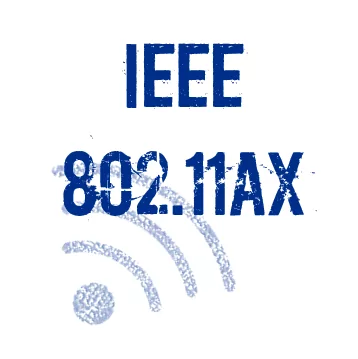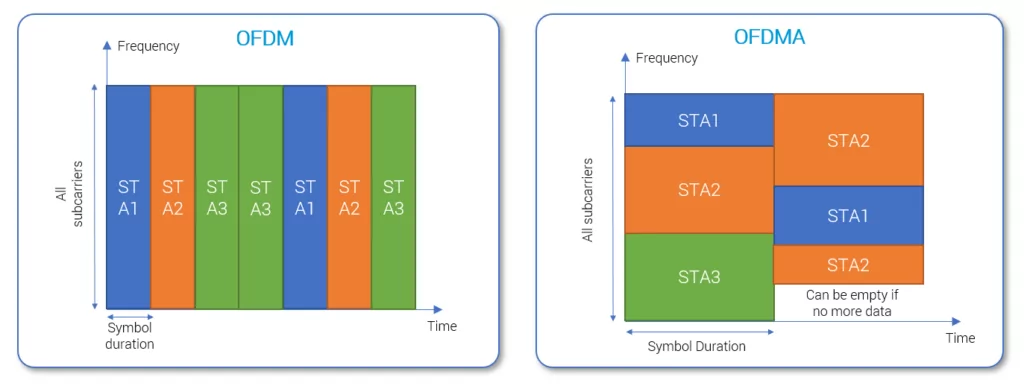
What is Wi-Fi 6?
We already had a few posts that explained a couple of aspects regarding WiFi 6, namely:
Now, this explains a bit of a background for the new generation Wi-Fi system. But what is all the fuss about?
Why should we care about Wi-Fi6?
The introduction of OFDMA into the Wi-Fi world is a major change. Why?
Well, let me get straight to the answer:
- firstly, it is because it uses scheduled access i.e., the AP decides: to who to transmit (AP to STA) and who transmits (STA to AP) in a particular time period, so the contention probability is significantly decreased, and the “air-time” more efficiently utilized,
- secondly, it is because – differently to OFDM, known from previous Wi-Fi generations – the transmitted signal can be assigned to multiple users in the same time (see details in Wi-Fi6 overview post), thus the resources can be more efficiently utilized (e.g., if a particular STA has only a small portion of data, it can be “co-scheduled” in the same time – using the same OFDMA symbols – as an STA which has a bigger portion of data, thus the waiting time is decreased – see the figure below).

Fig. OFDM vs OFDMA
Now, what we can observe having those two principles implemented together, is the following: instead of the overall system throughput decrease with the increasing number of devices connected to an AP (especially) in the uplink – known from the previous Wi-Fi standards – the throughput increases (2-3 times higher vs 802.11ac (Wi-Fi 5))! Why? Because the AP schedules the transmission according to the actual needs, and nobody wastes time on waiting and on collision.
Therefore, we end-up having the system which: is more robust towards low latency services; is more spectrally efficient; allows for (actually) implementing (some) QoS profiles; and coordinates the access to the spectrum.
Why can we say that with confidence? Well, this scheme (OFDMA & Scheduling) is successfuly implemented across mobile technologies since 2008 with the introduction of LTE (and was also implemented in WiMAX, which is now almost forgotten btw :)), and now made it to 5G, although there were some “non-orthogonal” solutions proposed (which are still on table for next 3GPP releases).
And having all this in mind, the “bad” 2.4GHz band is again back on track!
Is it worth considering?
To allow for all this to work perfectly, we’d have to have all devices and APs on air with 802.11ax implemented, which of course will not be possible (at least not from day 1), so is it worth investing in Wi-Fi 6?
First of all, 5.8GHz spectrum is less congested, so implementing Wi-Fi 6 there can give you an immediate effect. Secondly, when used in 2.4GHz, the Wi-Fi 6 enabled APs will have to respect all the legacy communication (backwards compatibility requirement), while still enabling the 802.11ax-enabled STAs to use OFDMA scheme (which, at least slightly, decreases the congestion). Thirdly, the Wi-Fi 6 will support the 6GHz band recently released in US [2] (and possibly to be later released for Wi-Fi access in other places).
So, summarizing, I’d say, it’s definitely worth considering and at least testing.
Other materials
[1] High efficiency WLAN task group web: http://www.ieee802.org/11/Reports/tgax_update.htm
[2] https://venturebeat.com/2018/10/23/fcc-expands-3-5ghz-band-to-5g-and-opens-6ghz-band-to-future-wi-fi/
[3] To check out our training on Wi-Fi systems, click here.








Leave a Reply